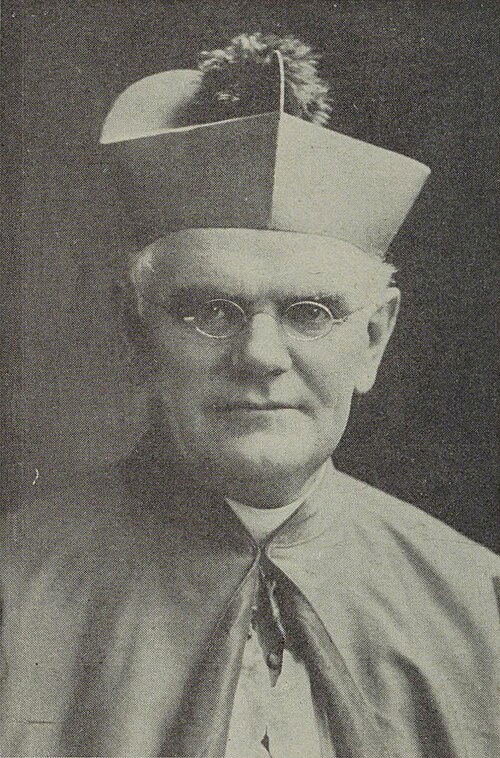An American born in New York on October 29, 1849 Thomas Hendrick belonged to a distinguished family: one of his brothers was a Magistrate of the Supreme Court of New York; another a Consul General; two of his sisters entered religious life; another brother was in the Secretariat of the Holy Father. Thomas Hendrick was ordained priest June 7, 1873. Within the period of 18 years after ordination he served in several parishes in Rochester. As Ecclesiastical Lawyer and member of the Supreme Council of the Department of Education in New York, he became a close friend of President Theodore Roosevelt, then Governor of New York.
Pope Saint Pius X appointed him Bishop of Cebu on August 18, 1903 five days after which he was consecrated. He arrived in the Philippines on February 29, 1904. He was enthusiastically received by both Filipinos and Americans during his solemn installation on March 11, 1904. He won the admiration of all on account of his angelic simplicity.
Inspite of the inconvenience and privations he had to undergo he visited the entire diocese. His self-sacrificing spirit, simplicity and naturalness attracted both poor and rich, both powerless and powerful. He promoted Catholic education and introduced in the seminary the english department and military instruction under the government program.
On account of the scarcity of diocesan priests, he called on the Redemptorists of the Irish Province in 1906 to take care of the parishes of Opon and Cordova and to conduct missions throughout the Diocese. He was one of the Bishops of the Second Provincial Council of Manila which assembled in December 1907.
In his travel to Rome in January 1908 he obtained much help for his poor diocese from the Holy Father whom he acquainted with the precarious situation of parishes in the Philippines. The Holy Father promised to send financial assistance and sacred vestments. In America through his eloquent sermons and conferences he was able to show the capacity of the Philippine Clergy and people as well as answer questions regarding the relationship between the American Government and the Catholic Church occasioned by the revolution.
He had hardly returned to the Philippines when in April 1908 he fell a victim of serious illness which endangered his life several times. Inspite of it he managed to assist at the consecration of his beloved Auxiliary, Bishop Juan Gorordo. He was preparing to go back to the United States for treatment when on the day before his departure he was attacked by cholera so seriously that all doctors in the city were called to offer their professional help but to no avail. His confessor was called at his instance. The Bishop of Jaro, Dennis Dougherty (earlier Bishop of Segovia, then Cardinal of Philadelphia), who had come to see him off to America, administered to him the last sacrament while his brother, Msgr. Jose Hendrick, gave him the plenary indulgence. The dying bishop asked all the priests present for absolution. They had come for the despedida, which had become a welcome for eternal life. He died like a saint blessing his priests and all the people and amidst the tears of all who came to see him depart for America, but this time for the next life. The date was November 30, 1909. He was 60 years old, 35 years a priest, six and a half a bishop.
The funeral rites were officiated by Bishop Dougherty of Jaro. Bishop Juan Gorordo, the Auxiliary Bishop of Cebu, delivered a tear-provoking eulogy. Monsignor Singzon and four others representing the clergy concluded the rites by singing individually five responses for the dead. He was buried in the Cathedral beside the tomb of Bishop Madridejos. Until his appointment Bishop Gorordo was Apostolic Administrator of the Diocese of Cebu.

